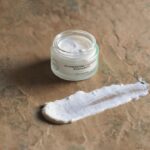After your tooth extraction, the first few hours are crucial for your recovery. You will likely be given gauze to bite down on, which helps control bleeding. It’s essential to keep this gauze in place for at least 30 minutes, as it aids in forming a blood clot at the extraction site.
If bleeding continues after this period, you may need to replace the gauze with a fresh piece and apply gentle pressure. Remember, it’s normal to experience some bleeding, but if it becomes excessive or doesn’t subside, you should contact your dentist immediately. In addition to managing bleeding, you should also be mindful of your head position.
Keeping your head elevated can help reduce swelling and minimize discomfort. You might find it helpful to prop yourself up with pillows while resting. Avoid any strenuous activities or bending over, as these actions can increase blood flow to the area and exacerbate bleeding.
Taking it easy during the first 24 hours post-extraction will set the stage for a smoother recovery.
Key Takeaways
- Apply gauze to the extraction site and bite down to control bleeding
- Use ice packs to reduce swelling and discomfort
- Avoid smoking, drinking through a straw, or spitting to prevent dry socket
- Stick to soft foods and avoid hot, spicy, or hard foods
- Gently brush and rinse the extraction site, but avoid vigorous rinsing or touching the area with your tongue
- Keep an eye out for excessive bleeding, severe pain, or signs of infection
- Schedule a follow-up appointment for further evaluation and care
Managing Pain and Discomfort
Pain management is a significant aspect of your recovery process after a tooth extraction. Your dentist will likely prescribe pain relief medication or recommend over-the-counter options to help alleviate discomfort. It’s important to take these medications as directed, even if you feel fine initially.
If you experience severe pain that isn’t relieved by medication, don’t hesitate to reach out to your dentist for further advice. In addition to medication, there are other strategies you can employ to manage discomfort.
Applying a cold compress to the outside of your cheek can help reduce swelling and numb the area, providing relief from pain. You should apply the compress for 15-20 minutes at a time, allowing breaks in between to avoid skin irritation. Additionally, staying hydrated and resting can significantly contribute to your overall comfort during this healing period.
Preventing Dry Socket

One of the most common complications following a tooth extraction is dry socket, a painful condition that occurs when the blood clot at the extraction site dislodges or dissolves before the wound has healed. To prevent this, it’s crucial to follow your dentist’s post-operative instructions carefully. Avoiding certain activities, such as smoking or using straws, is essential, as these can create suction that dislodges the clot.
If you’re a smoker, consider refraining from smoking for at least 48 hours after the procedure. Additionally, be cautious with your oral movements in the days following your extraction. Avoid vigorous rinsing or spitting, as these actions can also disturb the clot.
Instead, if you need to rinse your mouth, do so gently with warm salt water after the first 24 hours. This can help keep the area clean without risking dislodging the clot. By taking these precautions seriously, you can significantly reduce your risk of developing dry socket and ensure a smoother recovery.
Eating and Drinking Guidelines
| Guidelines | Recommendation |
|---|---|
| Water intake | 8 glasses (64 ounces) per day |
| Fruit and vegetable servings | 5 servings per day |
| Sugar intake | Limited to 25 grams per day for women and 36 grams per day for men |
| Alcohol consumption | Up to 1 drink per day for women and up to 2 drinks per day for men |
Your diet plays a vital role in your recovery after a tooth extraction. In the first 24 hours, it’s best to stick to soft foods that require minimal chewing. Foods like yogurt, applesauce, mashed potatoes, and smoothies are excellent choices that provide nourishment without putting stress on your healing gums.
Avoid hot foods and beverages during this initial period, as they can irritate the extraction site and increase discomfort. As you progress in your recovery, you can gradually reintroduce more solid foods into your diet. However, be cautious about what you choose to eat.
Steer clear of crunchy or hard foods that could potentially dislodge the blood clot or cause pain. Additionally, avoid spicy foods that may irritate your gums. Staying hydrated is equally important; drink plenty of water but remember to avoid using straws for at least a week post-extraction to prevent complications.
Oral Hygiene Instructions
Maintaining good oral hygiene is essential for promoting healing after a tooth extraction. However, you’ll need to adjust your routine slightly during the initial recovery phase. For the first 24 hours, avoid brushing the extraction site directly to prevent disturbing the blood clot.
Instead, focus on gently brushing your other teeth and rinsing with warm salt water after meals to keep your mouth clean. After the first day, you can resume brushing your teeth but do so with caution around the extraction site. Use a soft-bristled toothbrush and be gentle to avoid causing irritation or pain.
It’s also advisable to avoid mouthwash containing alcohol during this period, as it can be too harsh on your healing gums. Instead, stick with warm salt water rinses until your dentist gives you the green light to return to your regular oral hygiene products.
Monitoring Healing Progress

As you recover from your tooth extraction, it’s important to monitor your healing progress closely. Pay attention to how you feel and look for any changes in the extraction site. Swelling and mild discomfort are normal in the first few days; however, if swelling worsens or persists beyond three days, it may indicate an issue that requires attention.
Keeping track of your symptoms will help you identify any potential complications early on. You should also be aware of how your pain levels change over time. While some discomfort is expected, if you notice an increase in pain or if it becomes sharp and intense rather than dull and manageable, it’s essential to consult with your dentist.
They can assess whether there are any underlying issues that need addressing and provide appropriate treatment options.
Signs of Complications
While most tooth extractions heal without complications, being aware of potential warning signs is crucial for ensuring a smooth recovery. One of the primary indicators of complications is persistent or worsening pain that doesn’t respond to over-the-counter pain relief methods.
Other signs of complications include excessive bleeding that doesn’t subside after several hours or signs of infection such as fever, chills, or pus discharge from the extraction site. If you experience any of these symptoms, don’t hesitate to contact your dentist immediately for guidance on how to proceed. Early intervention can often prevent more serious issues from developing.
Follow-Up Appointment Instructions
Your dentist will likely schedule a follow-up appointment within a week or two after your extraction to monitor your healing progress and address any concerns you may have. It’s important not to skip this appointment; it provides an opportunity for your dentist to ensure that everything is healing properly and that no complications have arisen. Before attending your follow-up appointment, make a list of any questions or concerns you may have experienced since your extraction.
This will help ensure that you get all the information you need during your visit. Additionally, if you notice any unusual symptoms before your scheduled appointment—such as increased pain or swelling—don’t hesitate to call your dentist’s office for advice on whether you should come in sooner. In conclusion, taking care of yourself after a tooth extraction is vital for ensuring a smooth recovery process.
By following these guidelines on immediate post-extraction care, managing pain and discomfort, preventing dry socket, adhering to eating and drinking guidelines, maintaining oral hygiene, monitoring healing progress, recognizing signs of complications, and attending follow-up appointments, you can significantly enhance your chances of a successful recovery and return to normalcy in no time.
After getting a tooth extraction, it is important to follow proper aftercare instructions to ensure a smooth recovery process. One helpful article that provides tips on what to do following an extraction can be found at this link. This article may offer valuable information on how to manage pain, prevent infection, and promote healing after the procedure. By following these guidelines, individuals can minimize discomfort and complications associated with tooth extractions.
FAQs
What is a tooth extraction?
A tooth extraction is the removal of a tooth from its socket in the bone. This procedure is typically performed by a dentist or oral surgeon.
What should I do immediately after a tooth extraction?
After a tooth extraction, it is important to bite down on a gauze pad for 30-45 minutes to help stop the bleeding. It is also important to rest and avoid strenuous activities for the rest of the day.
How should I manage pain and swelling after a tooth extraction?
Pain and swelling after a tooth extraction can be managed with over-the-counter pain medication and by applying an ice pack to the affected area for 10 minutes at a time.
What foods should I eat following a tooth extraction?
After a tooth extraction, it is best to stick to soft foods that require minimal chewing, such as yogurt, applesauce, and mashed potatoes. It is important to avoid hot, spicy, or hard foods that could irritate the extraction site.
How long does it take for the extraction site to heal?
The healing process for a tooth extraction typically takes about 1-2 weeks. It is important to follow the post-extraction care instructions provided by your dentist to ensure proper healing.





